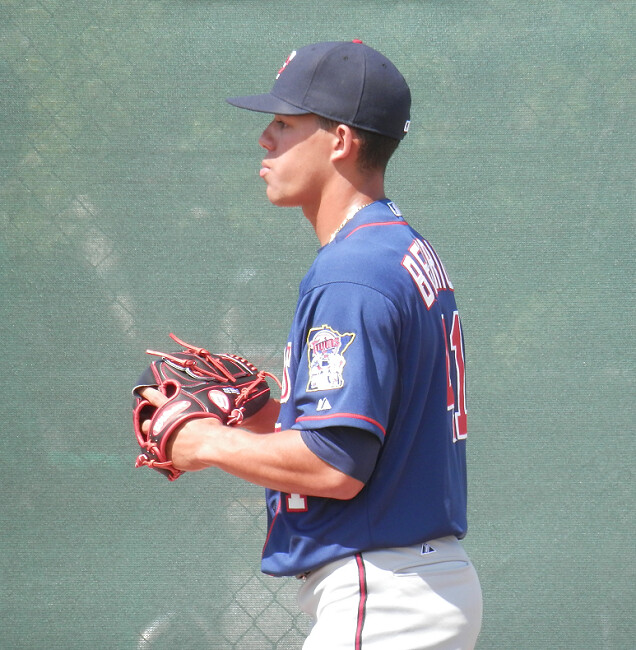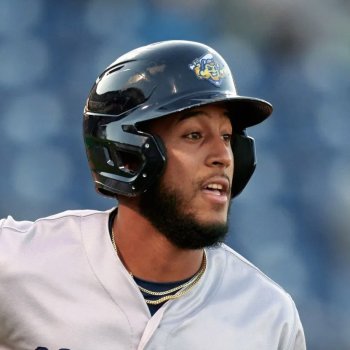Looks like the Twins had only one awful pitcher and 13 at average or above in 2014, according to this new data.
Twins Video
Originally published at The Tenth Inning Stretch
----
A great article was written today by Jonathan Judge and published at The Hardball Times, called FIP in Context, introducing an new metric, called cFIP, or contest-adjusted FIP that attempts to "estimate the pitcher’s true pitching talent during a particular season". Always interested in new pitching metrics development, and not only because I have partaken myself in the endeavor. this is an interesting one, albeit much more complex than PE and xPE. It also correlates well with SIERA, which along with xPE (because it is easy to calculate) are my 2 favorite predictive metrics regarding pitching performance.
I will not steal Jonathan's thunder, please read that excellent article, but I will present his framework and then present his work regarding the Twins' pitchers (he calculated cFIPs for every pitcher in the league the past 4 years, including Jamie Carroll.) The cFIP scale is normalized to 100 for average, just like OPS+ and ERA+, but it is a minus scale, meaning that less is better, like ERA and FIP and SIERA and all similar metrics. Should have been called cFIP-, but that is a different story. So 100 is average and less is better. Jonathan Judge has the following buckets of pitchers, according their cFIP:
<70 nbsp="" p="" superb="">70–85 Great
85–95 Above Avg.
95–105 Average
105–115 Below Avg.
115–130 Bad
130+ Awful
Let's put the 2014 Minnesota Twins' pitching staff in those buckets. For reference, players that are not still with the team are in (parenthesis). I am also including the 2015 cFIP numbers of the newcomers this off-season. They have an asterisk behind their names, that would have made Barry Bonds jealous:
Superb:
Phil Hughes 70
Great:
Glen Perkins 74
Above Avg.:
Casey Fien 89
Tim Stauffer 91*
(Yohan Pino 94)
Average:
Aaron Thompson 98
Logan Darnell 99
Ricky Nolasco 100
Trevor May 101
Ervin Santana 101*
Michael Tonkin 102
Caleb Thielbar 103
Blaine Boyer 103*
Lester Oliveros 105
Below Avg.:
(Jared Burton 106)
(Kris Johnson 106)
(Sam Deduno 107)
Stephen Pryor 108
Kyle Gibson 109
(Anthony Swarzak 111)
A. J. Achter 112
Ryan Pressly 112
Brian Duensing 114
Tommy Milone 114
Bad:
(Matt Guerrier 116)
(Kevin Correia 119)
Awful:
Mike Pelfrey 132
A few obsevations:
- According to this, the Twins had a superb pitcher, Phil Hughes, a great pitcher, Glen Perkins, and 13 total (I am not counting the newcomers) pitchers (that is a full MLB staff, ladies and gentlemen) who were average, above average, great or superb. Mike Pelfrey (who tied for worst in the majors in this metric) was the only awful pitcher in the Twins' staff
- But, The Twins had the second worst bullpen in the majors according to xFIP and SIERA and the third worst rotation in the majors, according to SIERA (fourth according to xFIP)
- Other than Yohan Pino, who was an unfortunate loss, The Twins' front office seems to behave pretty well according to this metric: The pitchers they let go, are all bellow average or beyond. They did keep a few below average pitchers, and they did keep Mike Pelfrey, who is better suited for the pen and was injured. Other than Duensing who had a down season, the below average pitchers are all young.
Big issue in the big picture here: The Twins had a whole staff worth (13) pitchers who were average and above, yet they managed to be almost at the bottom of the league in pitching. Those things seem pretty conflicting.
Let's dig deeper and check out the 2013 Twins' cFIP buckets that Jonathan Judge calculated. For reference purposes, players who left after 2013 are in parenthesis and I added Ricky Nolasco (with an asterisk) as well
Superb:
Glen Perkins 63
Casey Fien 67
Great:
Nobody
Above Avg.:
Jared Burton 91
Caleb Thielbar 91
Ricky Nolasco 93*
Michael Tonkin 94
Average:
Anthony Swarzak 97
Brian Duensing 97
(Shairon Martis 105)
Below Avg.:
Mike Pelfrey 109
(Liam Hendriks 110)
Ryan Pressly 111
(Cole DeVries 114)
(Andrew Albers 115)
Bad:
Kevin Correia 116
Samuel Deduno 116
(Josh Roenicke 118)
(P.J. Walters 122)
(Vance Worley 124)
Kyle Gibson 125
(Scott Diamond 129)
Awful:
Nobody
This is some really interesting data. Here is what I see:
- I think that I either underestimated the Twins' Front Office use of metrics in personnel decisions building the team or Jack Goin should buy me a beer next week at Hammond Stadium, because this tool really describes what the Twins are doing regarding personnel decisions: The tend to get rid of below average and below pitchers and add average and above pitchers. Hughes was around 100, but I did not add him here. This is a stop the presses type of statement, me coming close to shake my head in approval of what the front office is doing...
- This tells a tale of 2 cities: All the Average and above pitchers were relievers. All starters were bellow average or worse but not awful. And Pelfrey was the best.
- Enough with 2013. What happened in 2014, comparatively to 2013? Every single reliever from Perkins down regressed, while the starters (save hurt Pelfrey and replacement level Correia) improved. This is fundamentally interesting, because it kinds of breaks some old school axioms. And the one excuse for the decline of the Twins' pen in 2014 was that, they were worse because they were too tired because the rotation was so bad. This data, turns this upside down: The Twins 2013 rotation was worse than the Twins 2014 rotation, and the 2014 Twins' pen made the 2014 Twins rotation worse. So a bad pen can make a rotation worse. Like a reliever coming in with 2 outs and the bases loaded to give a grand slam and 4 runs to the starter. What a concept...
I am starting to really like this metric... So (and this is really hard for me to say) the Front Office did some improvements for 2014, that actually seem to be supported by real data, but the pitching tanked compared to 2013. Why?
I'd love to hear your theories after this, and this is what I am thinking:
- Look at that 2014 list up there. In your mind, normalize it for playing time. That would shift the buckets heavier to the below average. How many games did Pino or May start compared to Pelfrey, Correia, Deduno? Why was Burton used in high leverage situations over better relievers? Yes. Do the same normalization for playing time for the 2013 data. And you are looking at evidence of what has been written here loudly and clear about mismanagement of the Twins' pitching staff by Gardy and Andy for ages.
- This has to be part of the reason cause for the pen decline in 2014, and the root causes are described within there. And they have to be fixed. And, yes, metrics can be devised to normalize and approximate defense independent pitching, but I have not yet seen one that could estimate the madness of the Twins' 2014 OF (what is the range factor
 of a bucket?)
of a bucket?)
This actually makes me more hopeful, because it seems like the Twins are doing an effort to address some things. So, what do you say?








8 Comments
Recommended Comments